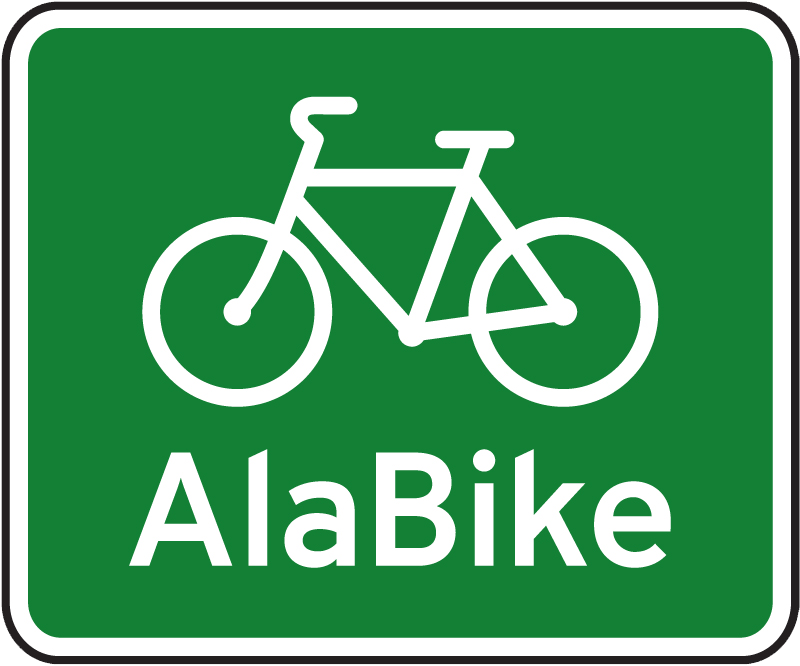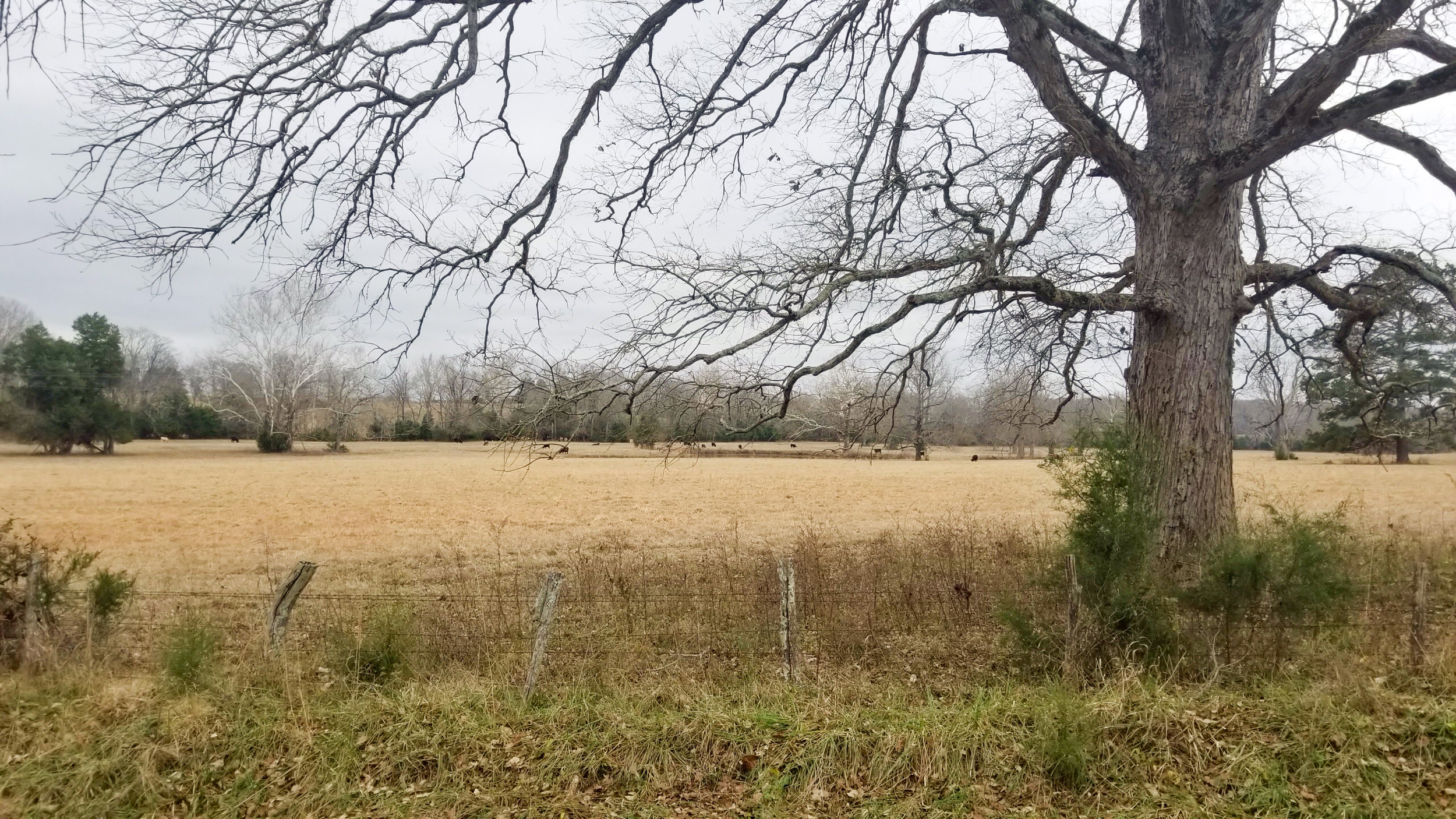by Tierra McCall
John Little’s Western Alabama Traverse Bike Tour
Despite winter weather advisories and the bitter cold of a particularly frigid December in the south, Auburn attorney John Little set out on a 2017-2018 New Year's quest, to conquer the state of Alabama, from top to bottom, by bicycle. Little is known in the Alabama Adventure Cycling community for his gravel road route developments, his legendary 1200-mile "Circumnavigation of Alabama" a few years ago, and his somewhat outrageous bike camping adventures, which he challenges other cycling enthusiasts to join him on. He'll be quick to insist, however, that he's "not really doing anything too difficult" and that "anyone can do it." John is constantly mulling over and planning a variety of multi-day bike tours, just waiting on his work schedule to clear up enough to allow him to take off on a ride. In this case, John noticed a call on the AlaBike website for state crossing route suggestions, and that was all the inspiration he needed to sit down and plan a route through Western Alabama. "There are a bunch of awesome routes you could create," he said. "The one I ultimately worked out for my ride was just one of many possibilities. Pouring over maps and planning the trip is half the fun!"
Having loaded his bike into a one-way rental car, Little drove from Auburn to Florence the day after Christmas, then biked from Florence to the Natchez Trace in Tennessee. Crossing the Alabama-Tennessee line, he fixed his sights nearly 500 miles south, to the Gulf of Mexico and Dauphin Island, where his journey would come to an end. The less than subpar weather and the risks that would come along did little to deter John from his goal. When asked if common sense would prevail and lead him to postpone the trip for warmer weather, John retorted “Common sense be damned. I'll have none of that!”, tightening his helmet and pushing off on what would prove to be an exhilarating ride.
He'd planned his route through Western Alabama with an eye toward riding on small, two-lane county roads with little traffic and staying overnight in modest, small town motels. "Most people don't realize how few vehicles they'll encounter on back county roads," he said. "I once counted the number of cars that passed me during an all-day, 85-mile ride from Auburn to Clio, and, with the exception of a five-mile stretch of highway I had no choice but to ride, I counted only 15 cars pass me, and I could hear them coming from a mile away."
The quiet, country roads of Northwest Alabama lent to a peaceful route for the first couple of days, and John stayed overnight in Red Bay and Vernon. "There's usually nothing wrong with a $50 to $60 rural motel," John says. "That's just the going rate in small towns. They can't really charge much more, but the rooms are typically just fine."
Aliceville, Alabama was the next small town where John had the pleasure of stopping. Graced with a charming seasonal farmer's market, and a museum to commemorate Camp Aliceville, an internment camp for German prisoners of war during World War II, this town is an appealing destination to cycle through or explore. Then it was on to Livingston for his next overnight stay and a ride through the University of West Alabama's campus the next morning.
After five strenuous days of riding, he was joined by his wife Priscilla and rested on New Year's Eve in the humble town of Butler, Alabama. This quaint town, with less than 2,000 residents, boasts incredible scenery and the comfortable feelings that small towns emanate, including captivating, tree-lined byways, the Tombigbee River, and the nearby nationally-ranked Bent Creek Lodge, where one can spend hours peacefully fishing and hunting. "We'd planned to stay put and watch Auburn play UCF and Alabama play Clemson on New Year's Day. In fact, I'd called ahead at least twice to confirm that the hotel had working TVs and ESPN," John said. "Priscilla brought her mountain bike, and that morning we set out to ride a 15-mile gravel road loop around Butler prior to the games starting," he added. "But with a high of 22˚F and constant 15 mph wind, we very quickly turned tail, stopped at the local Dollar General to buy chocolate and the best beer they had available, and went back to the hotel, cranked up the heat and watched football."
Returning to the road, Little continued south and enjoyed overnight stays in Chatom and Saraland. For the majority of the route, John felt as if the entire road belonged to him. With little to no traffic, he relished the solidarity of his surroundings and focused on keeping warm and dry. A typical day on this bike tour began with temperatures below freezing and highs only in the lower 40s by mid-afternoon. "I'd learned from prior failures that it's easy to makes mistakes riding long distance in very cold conditions. Get too warm and your base layers may get damp. Then when you stop and get cold, those base layers can be a real problem," he said. "So I tried to be careful not to overdress on my upper body, and I carried multiple spare sets of thin liner gloves to wear under my insulated winter gloves, because it was inevitable that I'd need to switch them out after each rest stop."
While the vast majority of his Western Alabama Traverse bike tour was on tranquil, back county roads with zero traffic, there were a few stretches of road that John says were tricky: a 2 mile segment of 2-lane AL-17 north of Sulligent, a 2-lane section of Celeste Road between Citronelle and Saraland, and portions of 2-lane AL-193 in Mobile. In each of these cases, the road was busy with traffic in both directions, and John explains that while drivers are generally courteous, "the biggest problem here is when someone crosses a double line to pass you, into oncoming traffic, putting everyone's lives at risk." But John says it's worth noting that these problematic sections were a very small percentage of the total mileage. "Everyone who bike tours expects to have to deal with some of this from time to time in order to connect the good roads," he says. On this trip, John says less than three percent of the total miles were problematic. He said "there were a number days I felt I had the entire road to myself most of the time."
Arriving at Dauphin Island, John had traveled 438 miles by bike, averaging 60 miles per day. He climbed a total of 21,500 feet on the trip, with an average of 60 feet per mile of climbing in northwest Alabama and 15 feet per mile approaching the coast. With this expedition behind him, John Little returned home, ready for wherever adventure would take him and his bicycle next.









